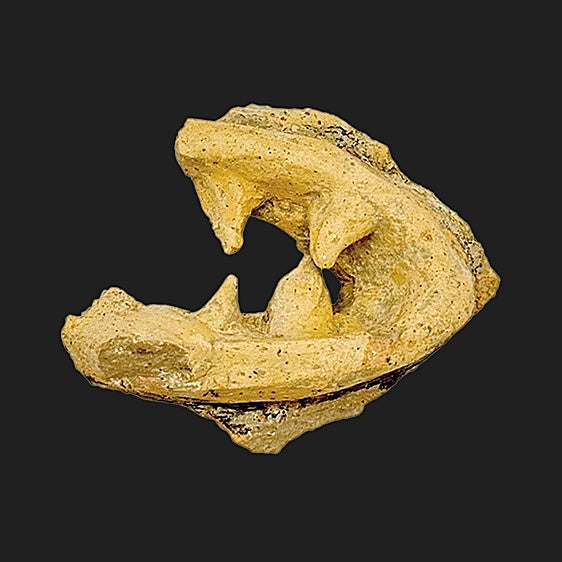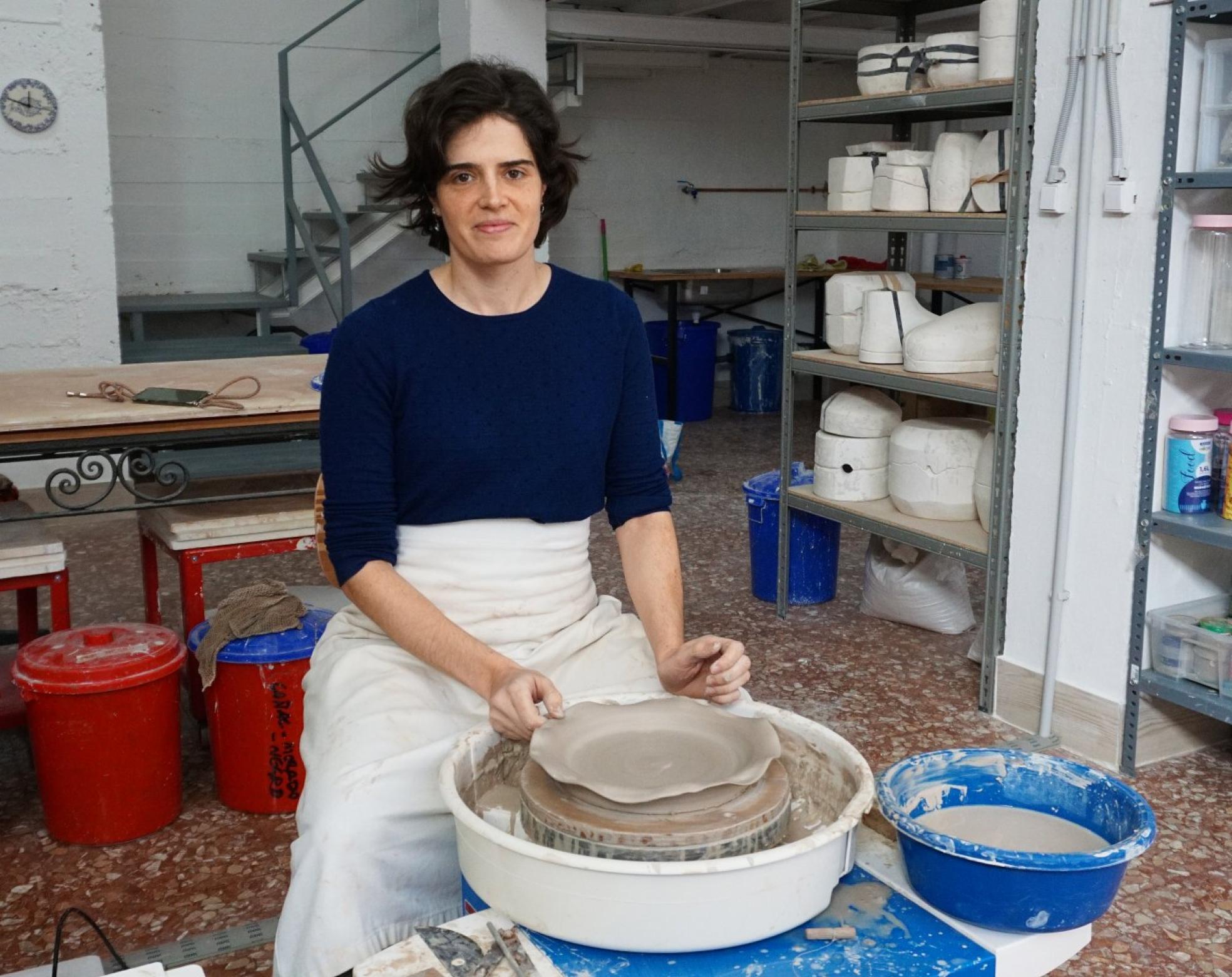The art in slow cooking
Design. Iconic restaurants including some with Michelin stars are enhancing their clients' sensory experience with tableware by artist María Monasterio, a potter from Malaga
SUSANA ZAMORA
Friday, 14 January 2022, 11:46
She recently moved to the heart of Malaga's La Victoria district, and there she is focusing on the project which she thought about so often when she was studying architecture at Malaga University. She had always been fascinated by manual arts and design, but after studying sciences at school she thought that type of career would bring her the best of both worlds. She was mistaken.
During her second year she realised that it was not for her. It didn't meet her initial aspirations and she felt that all the ideas flowing through her brain needed to be given form by her hands and not with a computer programme. So, before graduating (which she did in 2014), she began to learn pottery at the San Telmo Art School and took her first steps in the profession under the guidance of her uncle, ceramics artist Pablo Romero.
Her new studio is at the top of a steep hill, so visitors are quite out of breath when they arrive. As soon as she opens the door, it is obvious what she has been doing. The traces of clay and marks on her white apron give it away.
Kaleja, Takumi, Cavala, Palodú and La Alvaroteca are among those who have commissioned pieces by María Monasterio"When Mauricio Giovanini, from Messina, rang me, I could hardly believe it. Everything changed from then on"
María Monasterio is working hard. Her potter's wheel, beside two enormous kilns, presides over the room and, on an extraordinary set of shelves more than three metres long, a set of plates, all the same size and shape, are waiting to be fired. This is her latest commission and it will be finished by the end of the year: 50 pieces which will go to Calma Chica restaurant, in Las Palmas on Gran Canaria.
In fact, ever since chef Mauricio Giovanini crossed her path, nothing has been the same for María. The soul of the Messina restaurant in Marbella, which retained its Michelin star this year, proved to be a turning point in her career. .
Giovanini wanted ceramics which spoke the same language as his culinary creations, tableware of the same standard and in perfect harmony with his exceptional cuisine. Diners enjoy their experience via the sense of taste but also through their sight. Dishes need to be a feast for the eyes before they become a feast for the mouth, and therefore what they eat is as important as where they eat it. Lunch or dinner in a restaurant with a Michelin star is more than just sampling flavours, textures, alliances and unexpected and surprising aesthetics; it is a matter of staging, a spectacle in several acts which makes it something exceptional. Plates and trays are there on the stage to make fine dining almost a religious experience, and in that process María plays an important role.
But before that happened, there were some difficult months wandering around social media trying to attract interest in her catalogue. She decided to concentrate on functional ceramics, wanting to open up a niche in the market which had been little exploited in Malaga, and taking advantage of the boom in gastronomy in Spain.
She says she can't remember how many emails she sent to restaurants over the months, most of them in Malaga.
"It was just at that time that Mauricio happened to be looking for artisans to be involved in his new gastronomy project, and he decided to give me a call. I could hardly believe that that had happened, when I put the phone down after speaking to him," says María, who in record time and in the busy festive season had to meet his order.
"It was quite stressful because it takes time to create ceramics and there is little we can do to speed the process up, but I managed it in a month, which is what he wanted," she says.
Once a piece has been shaped, the base has to be fixed and left to dry for at least a week. "If you fire it before it's completely dry, it cracks," María says. Once it has been fired (firstly at 980 degrees for about nine hours) and left to cool, it is varnished and then fired again, this time at 1,260 degrees for 12 to 13 hours, to optimise the colour.
This may have been her debut, but she didn't disappoint. After that project came more commissions, not only from Mauricio Giovanini again, for his Bar de Fuegos restaurant in Madrid, but other restaurants which have made a name for themselves in Malaga, such as Takumi, Cavala, Palodú, La Alvaroteca and Kaleja. The latter, which is run by Dani Carnero, was also one of the first to place its trust in this artist, who strongly believes that personal attention is key, carefully monitoring each piece from the moment it is shaped to ensure that it meets the chef's requirements and that the finish is perfect before it is delivered.
Other establishments outside Malaga province have also appreciated that in María, including the Dama Juana restaurant in Jaén, which was awarded a Michelin star in 2020, and Bugao in Madrid, run by Hugo Ruiz, a chef who trained in Malaga at Calima, Café de Paris and El Higuerón, among others.
María works with 'gres', a stoneware that adapts well to high temperatures and makes pieces which are strong enough to be "exposed to a lot of wear and tear" she explains, and it also makes an exceptional glaze possible. She doesn't dislike any colours, but she is particularly fond of the blue of the Malaga sea and she also likes irregular shapes. She avoids symmetry in her designs, which is where everything begins.
"Although most of the chefs let me choose what I create, I always need to know, at least, the size and the shape they want the piece to be, although it also helps me to know the style of their restaurant, and how minimalist it is," she says. So far, none of the chefs, even the most demanding ones, have returned any of her pieces. "On the contrary, I'm the one who discards them if I don't think they are exactly what I wanted," she says.
"Pleasantly satisfied" was the reaction to one of the biggest challenges María has faced in the past five years, when the Bugao restaurant in Madrid, which specialises in seafood, ordered 400 pieces and wanted her to create a tuna tail as a napkin holder on the tables. "I remember that the mould for the reproductions took me longer than I initially calculated and maybe I lost some money because of that, but it was an experience which taught me a lot," she says.
Her prices depend on the type of piece and its size, but normally range from 12 euros for a tray to 32 or 35 euros for a plate with a more exclusive design and which are more difficult to make.
For the moment, María Monasterio is not short of work. She has found her niche, dedicated to creating, giving shape to her ideas with pieces which have a use. She is well aware that being self-employed and an artisan is a difficult combination, but the orders keep coming, one after the other, although not to the extent that she is overburdened with work. That is something she is grateful for, and it is certain that her one-year-old baby appreciates it as well.



